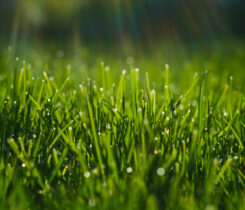Why you should stop blaming the Stimpmeter for the speed of your greens
I have been close to golf and golf management for more than 50 years. During that time, nothing has changed more than the quality of putting greens.
It was 1966 when I first learned how to sharpen and set the cutting height on a walking greensmower. Our greens were bermudagrass 328 (Tifgreen), still a fairly new variety in those days. I always felt it should have been named Tifgreen 3/16 because that was as low as you could cut it. Stimpmeter speeds of 6 feet were not uncommon.
Throughout my career, cutting heights decreased, and speeds increased. There were many times I thought, “Ok, this is as low as we can cut, and the greens cannot get any faster.” I was always wrong.
Today, I hear superintendents talking of cutting heights below 1/10-inch and greens speeds in excess of 13 feet. Have we finally reached the point where we cannot go farther? As much as I hate to say it, probably not.
Extremely low cutting heights unquestionably put stress on turfgrass and, in turn, those who manage it. The quest for Stimpmeter speeds in the teens predisposes turf to failure from many directions. Such speeds also result in slower play and higher scores for most everyday golfers.
But, somehow, the race continues.
Pointing fingers
Who’s to blame? There are probably many we can point our fingers at, including the USGA, PGA, state golf associations, low-handicap golfers, and yes, even superintendents. However, there is one entity we should stop blaming — the Stimpmeter itself.
I have listened to superintendents gripe about the Stimpmeter for years, and I’ll admit, it drives me nuts. To me, blaming the Stimpmeter for fast greens is no different than blaming your car’s speedometer when you took that 55-mph curve at 75 mph and ended up in a ditch. Or, in my case, believing that the old, ugly face I see in the mirror must be the mirror’s fault.
If only mirrors had never been invented.
The old saying that you can’t manage something unless you can measure it is true when it comes to putting green management. Today we use TDRs to measure moisture, thermometers to measure surface and rootzone temperature, salinity probes to monitor salt build-ups, the height of cut gauges to set our equipment and so on.
The Stimpmeter is simply a measurement tool that allows you to evaluate the end result of your overall greens management regime. It can provide insight into the timing of growth regulators, fertilization and cutting height.
And yes, it does measure the speed of your greens. Like it or not, the speed of the putting surface impacts overall putting quality. So much so that I guarantee you that if it had not been the Stimpmeter, someone else would have invented something to measure the speed of greens.
Mind your business
>Having argued for the use of the Stimpmeter, I’ll argue just as hard that golfers do not need to be informed of the speed of your greens on a regular basis any more than they need to know the height of the cut.
In jest, I have always said there are only two lies a superintendent should tell golfers.
The first is your golf lie. You should tell them you are a single-digit player.
Unfortunately, in the world of golf, this makes you an expert on all things, so you might as well join the club (although you may never be able to play golf in front of them).
The second lie is the Stimpmeter speed.
Once you have determined the speed that achieves a balance between the needs of your turf and the majority of your players, this is the answer to give whenever you just can’t avoid the question.
Hopefully, you never have to tell the second lie. There is a Stimpmeter speed for every course that achieves this balance. It is up to you to determine what that number is and then use the Stimpmeter to measure and maintain it as best as possible.
There is more than one way to achieve extremely fast green speeds.












